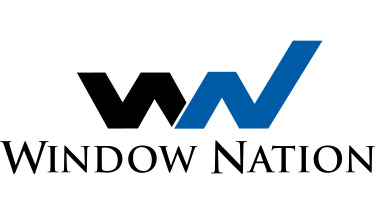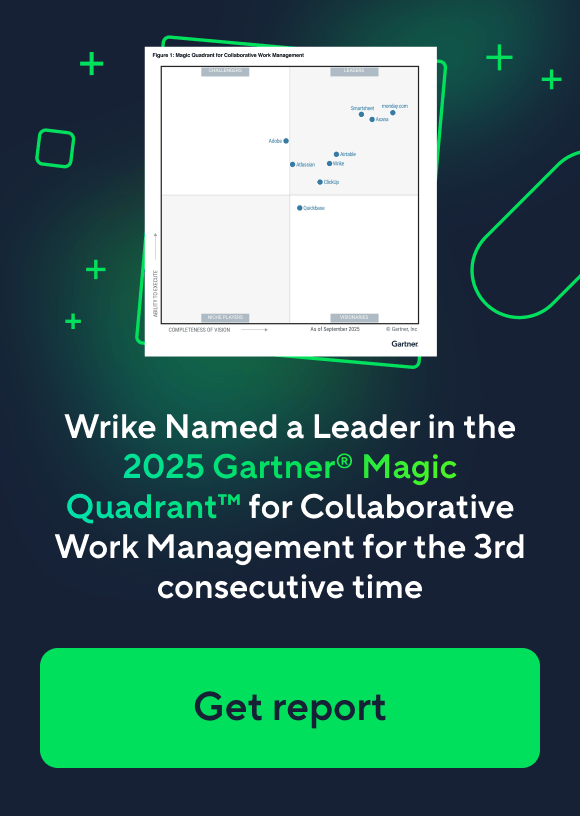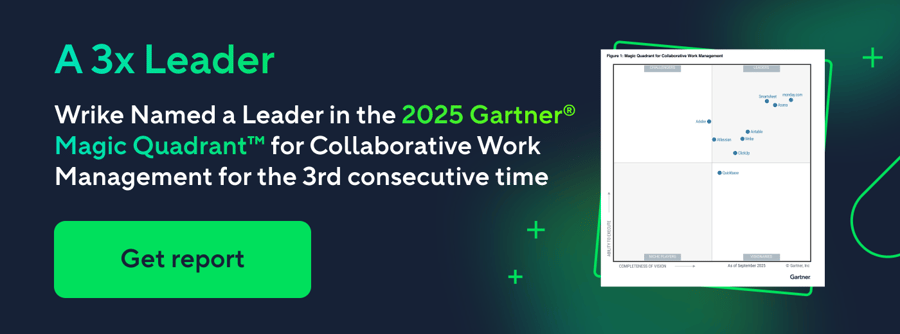Key takeaways:
- What are the downsides of free project management software? Free options often have user limits, feature restrictions, time limitations, lack of customization, minimal support, and may become inadequate as teams grow.
- Which free project management tool allows unlimited users? Wrike offers a free plan with no user limits and comprehensive features, making it suitable for both individuals and larger teams.
- What features are available with Wrike’s free plan? Manage tasks and subtasks, customize visualizations, access templates, collaborate with external users, and ensure data security.
- What are the costs for Wrike’s upgraded plans? Wrike’s pricing starts at $10/user per month for the Team plan, with higher tiers available as needs grow.
- What should I consider when choosing project management software? Evaluate the specific needs, team size, scalability, and essential features required for effective project management.
Look online for free project management software and you’ll find plenty of free plans for different tools. For many people, this is a good option. The problem, however, is that these guides don’t always clarify which features are in the free plan and which you need to pay for.
In this guide, we’re taking a more honest approach. We share seven free project management tools, breaking down exactly what you get for free and what’s paid. We’ll also point out some of the best choices for when you’re ready to leave the free plan behind and scale up. (Sneak preview: Project management software like Wrike gives teams the flexibility and power to build workflows that truly fit their way of working. And when your team is ready to grow, Wrike scales with you.)
First, though, a caveat. While free software can be useful for individuals and teams starting out, these options usually come with hidden costs. So, before we share some software options, we want to make you aware of some reasons why free software is not always the best fit.
7 downsides of using free software for project management
Project management software can be a game changer for the way you organize your work, deliver on projects, and manage your teams. To start with, it frees you from your dependence on manual processes and provides greater clarity on everything you need to do your work.
Of course, with any software, it’s tempting to look for the most affordable option.
But when it comes to project management, the cheapest option will often have hidden costs and limitations that it’s important to be aware of.
- You’ll likely only be able to have a certain number of users. Most basic software and free plans only support individual users or teams of up to three. This won’t be enough if you have a larger team.
- You’ll have serious limits on the features you can use. With free software, it’s unlikely that you’ll have access to the features that seriously impact your productivity and efficiency, such as automations, integrations, or collaborative features.
- You’ll often only have a free plan for a limited time before it expires. Before you get comfortable with your software, you’ll likely need to upgrade. There are very few tools that have plans that are free forever.
- You won’t be able to use the software as a single source of truth. As you’ll only have access to limited features, you’ll still need to use other tools for your work. This defeats one of the key benefits of project management software — that everything you need is in the same place.
- You typically won’t be able to customize your software on a free plan. Most free plans have limited customization options, so you’ll be forced to adopt a way of working that doesn’t really fit your team. Again, that means you won’t get all the benefits that project management software can offer.
- You won’t receive the training and support you might like. Typically, with free software, you just get the software. That means no onboarding, troubleshooting, or other kinds of support.
- As you grow, you’ll need new software that can support you. If you’ve been using a free plan, you’ll likely need to upgrade as you grow or switch to a new platform entirely.
So, free project management software isn’t for everyone. We recommend it only for small teams — and we’re not just saying that because we’re a software provider ourselves. If you’re an organization that’s growing or has more complex needs, the free software just won’t cut it.
That said, in the rest of this guide, we share seven free and affordable software options that offer the best solutions for small businesses on a tight budget.
1. Wrike: Project management software that’s free forever for unlimited users
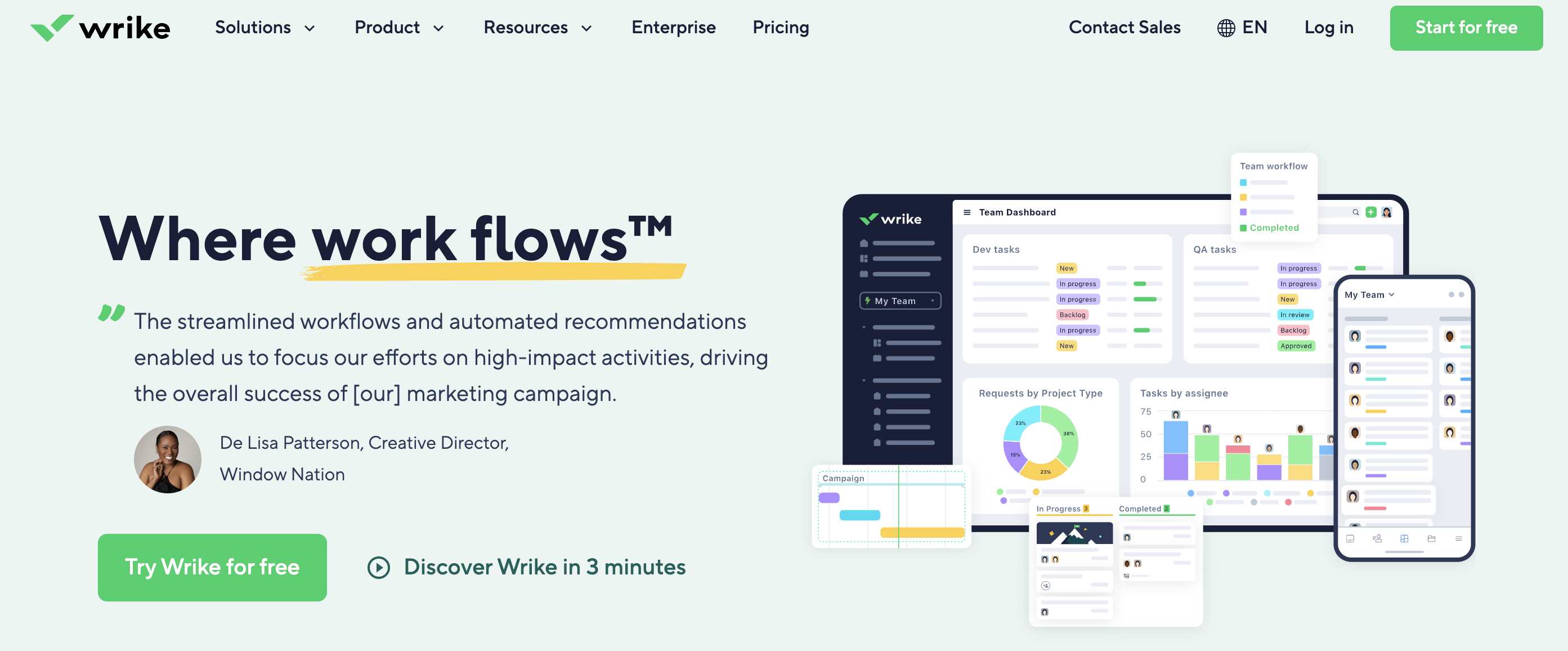
Our free plan helps you to work more collaboratively and more efficiently, for an unlimited amount of time. So, if it’s a good fit for you, you can use our free plan forever, no matter how many users you need to onboard.
What can you do with Wrike’s free plan?
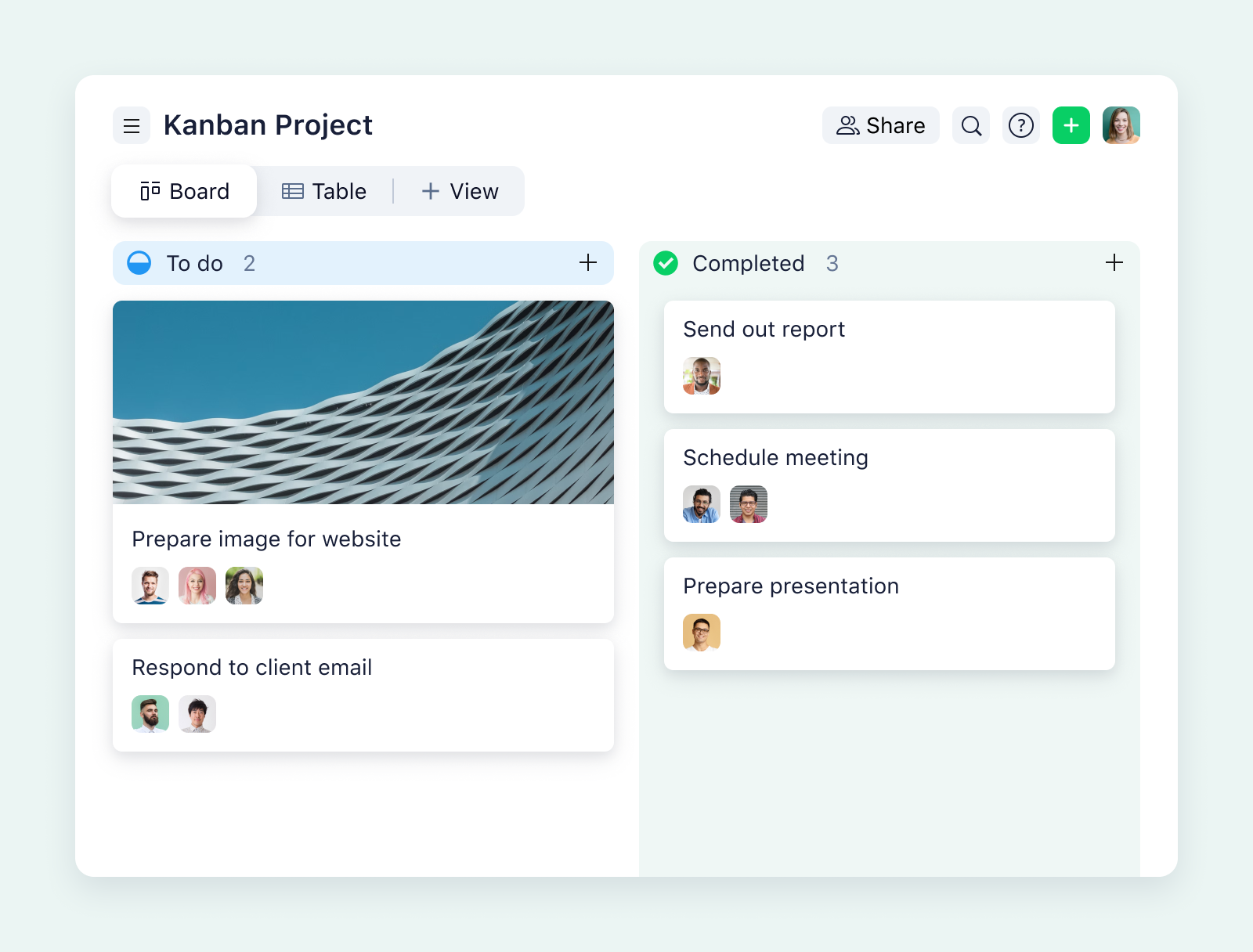
- Manage all your tasks and subtasks. You can create and assign tasks in a single click and mark them complete. You can also organize these tasks in a folder structure that makes the most sense for you and share company-wide work schedules, so everyone can stay on the same page.
- Customize how you visualize your work. You can choose between Kanban boards, tables, and charts to view how your projects are progressing across your team or organization, in the way that works for you. Plus, with customizable folders, you’ll be able to store tasks exactly where you need them.
- Get started quickly with our library of use case templates. Wrike has a variety of free templates, from marketing planning to software development.
- Involve collaborators from outside your team, department, or organization. Most free plans don’t let you work with external collaborators. Wrike does, so you can get reviews and edits exactly where you’re doing your work.
- Keep your organization’s data safe with our enterprise-grade security. Control who can access each task or project, and use two-factor authentication for added security. Whatever you choose, you can trust that Wrike is compliant, robust, and secure.
What can you do with Wrike’s higher plans?
Wrike’s free plan is one of the most comprehensive and customizable available. But if you want deeper, more powerful features, we recommend that you upgrade to one of our paid plans.
To give you a taste of what’s possible, here are four things you can do with Wrike’s paid plans:
1. Customize your workflows entirely
If your organization begins to scale or you develop more complex needs in your project management, you may benefit from the greater customization of Wrike’s more comprehensive plans. For instance, you can:
- View your work as a Gantt chart or calendar. With Wrike’s additional visualizations, you can get deeper insight into your work, as well as better control over how you do that work. It’s easier to keep track of tasks, understand deadlines, and identify bottlenecks.
- Build a unique work environment with custom item types. Wrike offers custom item types to give you full control over the way you work.
- Maintain accountability and alignment. With Wrike, every task, milestone, and dependency is mapped out clearly, so your team knows exactly what’s next. Custom workflows ensure that nothing slips through the cracks, even as complexity increases.
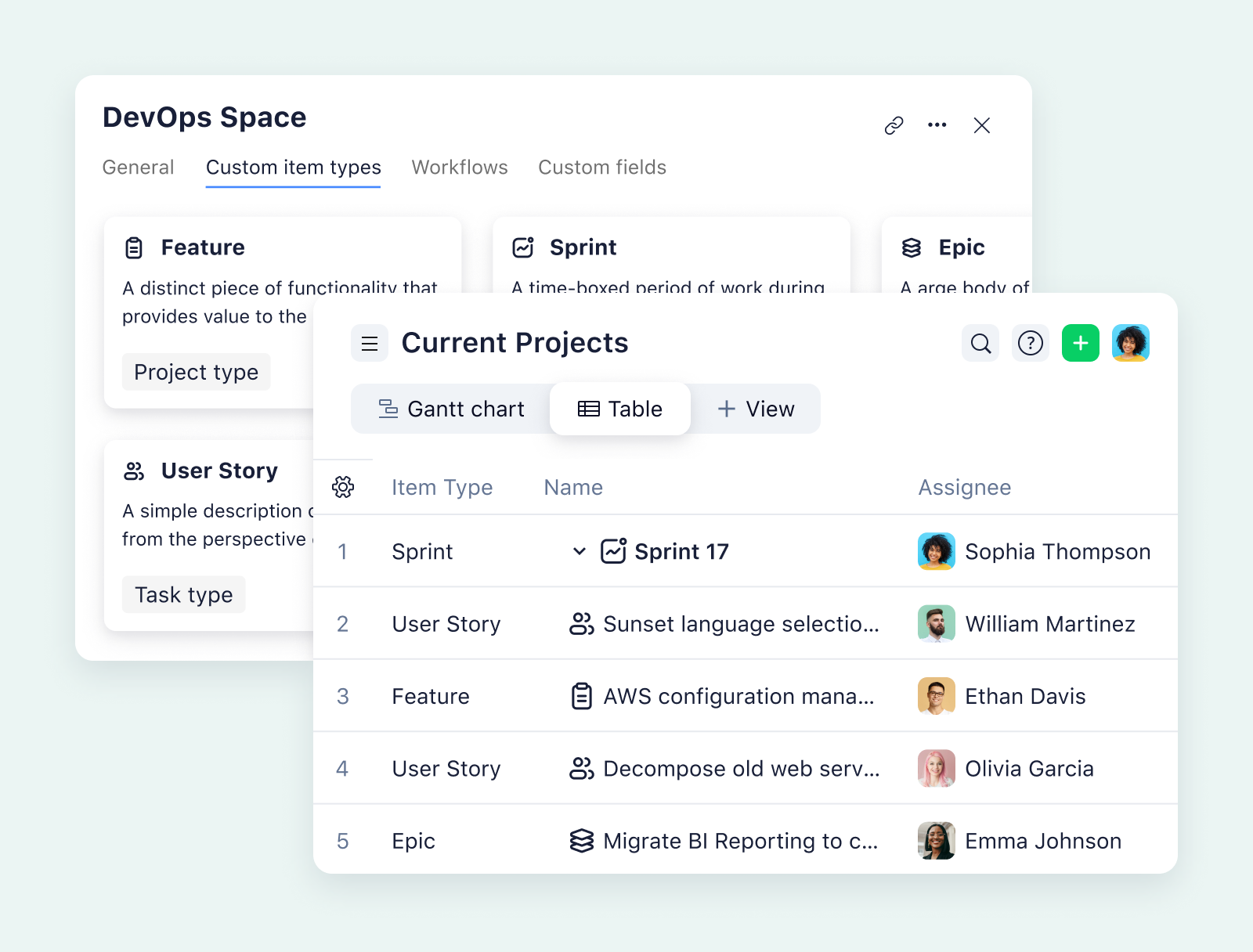
2. Better understand your work with personal dashboards and more sophisticated reporting
While free plans give you an account-wide view of your tasks, there may come a time when everyone in your organization needs a personalized view over their work. For more personalized insights and real-time reports, it can be useful to upgrade.
With Wrike, you’ll be able to:
- Give everyone a personalized view of what they need to do with dashboards. Personalized dashboards allow each colleague to see their individual to-do lists, priorities, and dependencies. It’s a completely customizable view on your organization’s work.
- Understand how your business is performing in real time. With Wrike, you can use reporting features to get real-time insights into how your work is going. For instance, it’s easy to update project statuses, get notified on what’s happening, and share key reports with stakeholders.
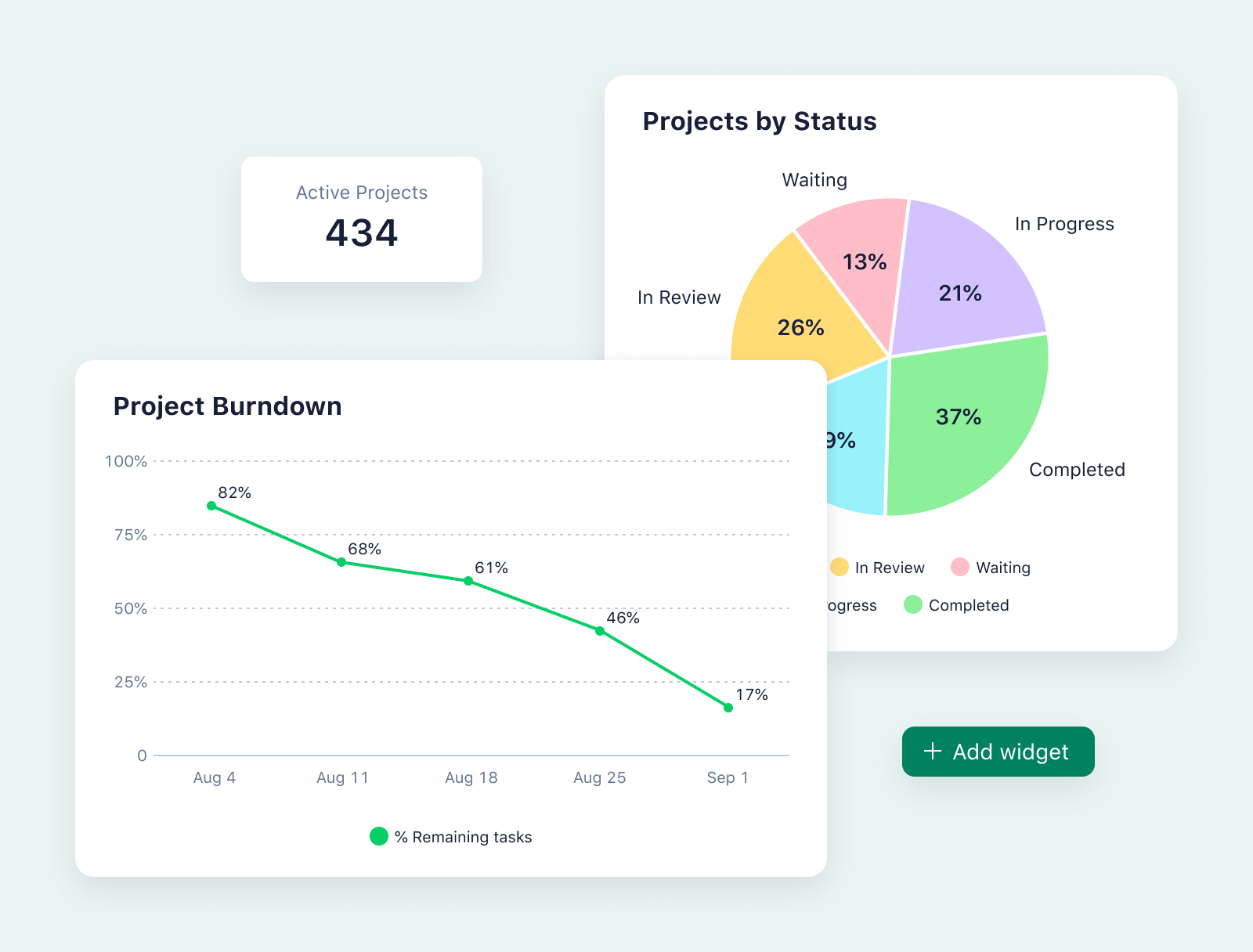
3. Bring all your communications together in one place with integrations and collaboration features
While you can bring unlimited users together from across your organization to use Wrike’s free plan, you may benefit from additional features in order to collaborate more effectively. Upgrade so that you can:
- Integrate with over 400 apps and tools using Wrike’s native integrations. While you can integrate your email on our free plan, Wrike’s higher plans give you access to our enormous library of native integrations. It means that you can manage your work from various tools all within Wrike.
- Get approval for work from anyone — internal or external — within Wrike. Customize approval flows for external stakeholders to make it as easy as possible to get assets over the line.
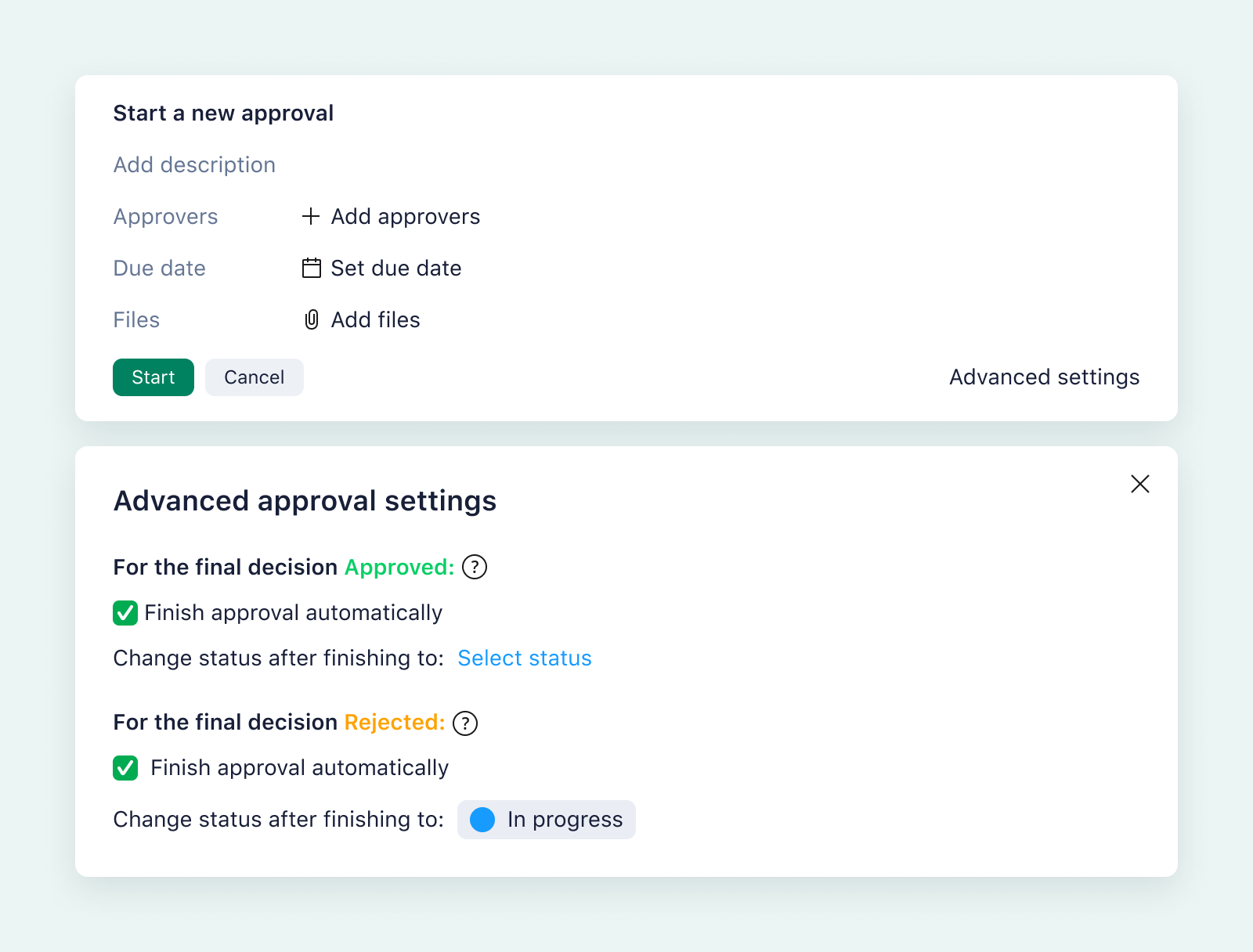
4. Make further efficiency gains with Wrike’s AI and automation
Finally, with Wrike’s higher plans, you’re able to harness the power of artificial intelligence and workflow automation to get work done more efficiently. We have some of the most powerful AI tools for work management in the industry, so it’s well worth upgrading from the free plan to benefit.
- Let Wrike handle your manual repetitive tasks with our workflow automation. Wrike uses rule-based logic to automate tasks that you would otherwise have had to perform manually.
- Identify opportunities for automation, forecast project risk, and create content with Wrike AI. Thanks to our rich, high-fidelity data, you can rely on Wrike’s Work Intelligence® solution to help you do your work. It can support almost every process within your organization, to enable more efficient work, more accurate decision making, and content that better resonates with your audience.

Wrike’s AI features have become indispensable in my daily workflow, enabling me to accomplish more in less time and with greater accuracy.
De Lisa Patterson, Creative Director
Wrike pricing
With Wrike, our free plan is free forever, for an unlimited number of users. However, if you want to upgrade, you can do so for the following prices:
- Team: $10/user per month
- Business: $25/user per month
- Enterprise: Custom pricing
- Pinnacle: Custom pricing
2. Trello
Trello is a project and task management tool that’s known for being simple and easy to use. Trello’s free plan can help you manage a limited number of basic projects.
What sets Trello apart from other project management tools is that it’s primarily a Kanban board, with cards that you can drag and drop between different statuses. The free plan offers Kanban functionality, but you will need to pay more if you want other types of visualizations.
What can you do with Trello’s free plan?
- Use Kanban boards to track project progress. You get unlimited cards (representing tasks) but you can only set up 10 separate projects.
- Automate some very basic tasks, such as changing the status of cards.
- Set assignees and due dates, so you can see who needs to do what.
- Track projects on both desktop and mobile apps. It helps you manage your simple projects wherever you are.
What can you do with Trello’s higher plans?
- See your work in different views, such as timeline, table, and calendar.
- Get insight into project metrics with reporting tools.
- Create as many projects as you need. Trello’s higher plans offer unlimited projects. However, it’s still a good choice only for simple projects.
Trello pricing
- Free: $0 for unlimited users
- Standard: $5/user per month
- Premium: $10/user per month
- Enterprise: $17.50/user per month
3. Notion
Notion is better known as a platform where you can create business documentation and company wikis. However, it does have some project management features too, such as task assigning, reporting tools, and some automations.
Most of this is available on Notion’s free plan. However, this basic plan has time limitations on page history if you want more than one user, which can be frustrating. Plus, while Notion is known for its AI tools, these aren’t available on the free version at all.
What can you do with Notion’s free plan?
- Choose from a range of project views, including calendar, timelines, and boards.
- Set up tasks, link dependencies, and create subtasks too.
- Access extremely limited analytics, including just one analytics chart of your choice.
- Publish content to the web. As Notion is also a content management system, you can publish any content you create. However, you won’t be able to link your site with Google Analytics on the free plan.
What can you do with Notion’s higher plans?
- Perform basic automations, such as setting task assignees and deadlines.
- Get better CMS tools, including search engine indexing and site customizations.
- Secure your site and organizational data. Notion limits most of its security features, such as single sign-on and HIPAA compliance, to higher plans.
- Use AI at an extra cost. Notion’s additional AI features cost $8/user on top of what you’d be paying already.
Notion pricing
- Free: $0 for individuals
- Plus: $10/user per month
- Business: $15/user per month
- Enterprise: Custom
If you want AI, you can add it to each of the plans for an additional $8 per user.
4. Zoho Projects
Zoho is a software company offering business platforms for everything from customer relationship management (CRM) to invoicing. Zoho Projects is its project management software.
While its free features are limited, if you’re looking for an affordable project management tool, Zoho Projects could be a good choice. You’ll notice that pricing is lower than other providers. Just be aware that it’s not quite as robust as other platforms out there.
What can you do with Zoho Projects’ free plan?
- Manage just two projects, for up to three team members.
- Set up tasks, subtasks, and task dependencies within those projects.
- Integrate with some platforms, including Zapier, Dropbox, Slack, and three of Zoho’s other products.
- See some basic reporting and analytics charts.
What can you do with Zoho Projects’ higher plans?
- Access Gantt charts and workload reports.
- Use resource management features, such as time tracking.
- Integrate with 11 external collaboration tools, and all nine other Zoho applications.
Zoho Projects pricing
- Free: $0
- Premium: $4/user per month
- Enterprise: $9/user per month
5. Nifty
Nifty is a less well-known project management software. However, it’s a good option for startups and smaller teams that want an affordable tool with lots of features on its cheaper plans. While it does the basics well, what you won’t get on the free plan is any robust security or other advanced features.
What can you do with Nifty’s free plan?
- Manage two active projects at a time, with unlimited members.
- Use key features, such as tasks, milestones, docs, and dependencies.
- Chat with team members using the native chat messenger.
- Self-serve support through the help center.
What can you do with Nifty’s higher plans?
- Manage an unlimited number of projects and team members, but only at the most expensive plans.
- Access advanced features, such as time tracking, custom fields, and budget and goals tracking.
- Secure your data with much more robust security procedures.
Nifty pricing
- Free: $0
- Personal: $7/user per month
- Pro: $10/user per month
- Business: $16/user per month
- Enterprise: Custom
6. OpenProject
OpenProject is a free and open-source software for project management. That means it’s built for the community, with everyone allowed to access and view its code.
As a result, OpenProject has a large range of free features and always offers community support, allowing you to access help whenever you need it. If you want to upgrade, there are options for that too, with enterprise features to add to your software.
What can you do with OpenProject’s free plan?
- Visualize your work in Gantt charts, and share them with stakeholders.
- Schedule your work throughout the week, accounting for time off.
- Track and evaluate costs and budgets.
- Set up custom fields and workflows.
What can you do with OpenProject’s higher plans?
- Access OpenProject’s enterprise features, such as Kanban, version, and team boards.
- Build a work breakdown structure.
- Get help from professional support, including on-site support.
- Integrate with GitHub, GitLab, Nextcloud, and OneDrive.
OpenProject pricing
- Community: Free
- Basic: $7.25
- Professional: $13.50
- Premium: $19.50
- Corporate: Custom
7. Freedcamp
While it’s another tool in the project management space that’s not so well known, Freedcamp is often cited as an effective free tool. It also has affordable options if you choose to upgrade.
As such, it may have a lot of what you need from a free project management app. But, like many of the other tools on this list, most of the very useful functions are reserved for the paid plans.
What can you do with Freedcamp’s free plan?
- Create tasks and milestones, chat with colleagues, and share files.
- Set up a workspace with an unlimited number of colleagues.
- Connect to other apps via the Zapier integration.
- Make projects public to spread awareness of your work.
What can you do with Freedcamp’s higher plans?
- Integrate with other tools more easily, including Google Suite, Dropbox, and email.
- Create templates from past projects.
- Benefit from add-ons such as Gantt charts, custom fields, and recurring tasks.
Freedcamp pricing
- Free: $0
- Pro: $1.49/user per month
- Business: $7.49/user per month
- Enterprise: $16.99/user per month
Choose Wrike for scalable project management software
In this guide, we’ve shared some of the best free project management software out there right now. As you’ll have seen, all free plans will pose some limitations on what you can do with the software. Which one you choose will depend on which free features best match your needs.
If you’re looking for a free project management tool that allows unlimited users for an unlimited amount of time and can scale with you as your workflows become more complex, choose Wrike. Get started today.



